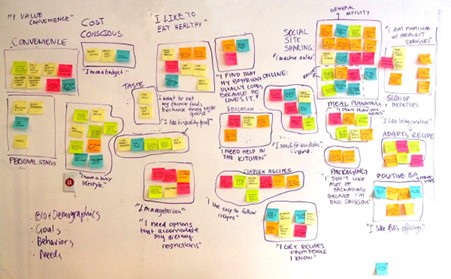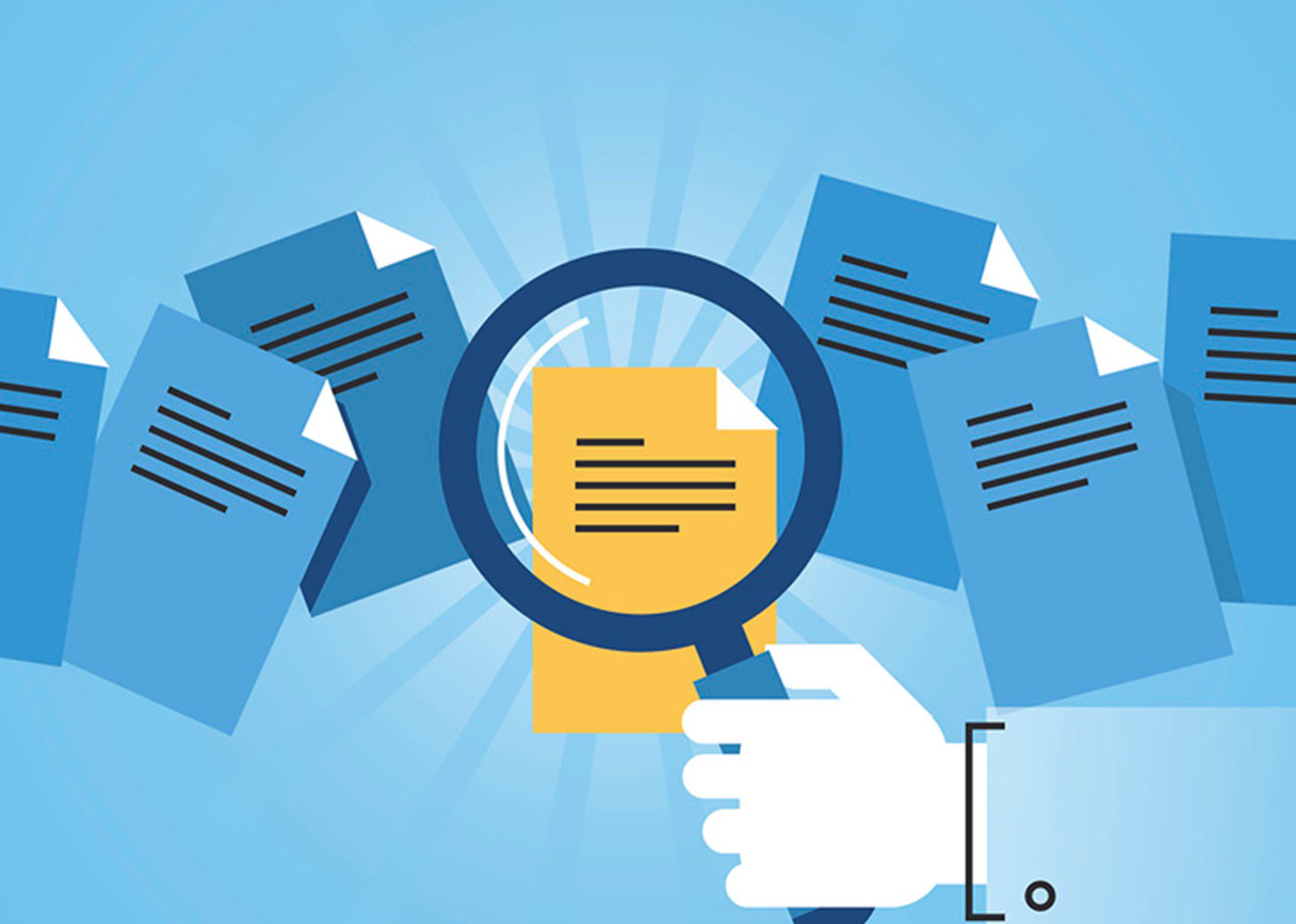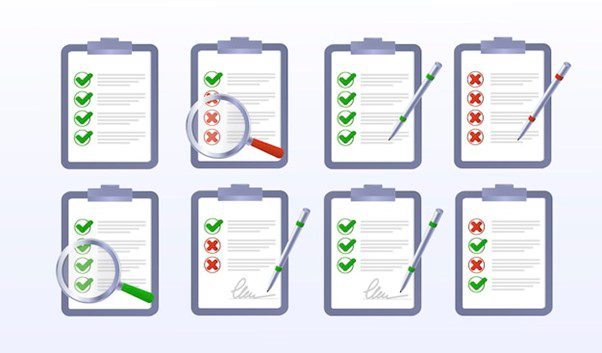Information gathering and grouping are crucial in many fields, including business, education, research, and creative endeavors. It involves collecting and organizing information from various sources to make it easy to understand, analyze, and use. Information gathering and grouping can help people make informed decisions, identify patterns and trends, and generate new ideas and insights. There are many ways to cluster data into groups, including affinity mapping. It involves writing down ideas or pieces of information on sticky notes or cards and grouping them based on their similarities.
Affinity mapping is a powerful technique for organizing information visually and intuitively. It is an excellent way to generate new ideas, improve inner productivity, identify patterns and trends, and organize large amounts of information quickly and easily. This article will provide a step-by-step guide on affinity diagrams/mapping, how it works, and start grouping information effectively. So, if you want to improve your information-gathering and grouping skills, stay with us to learn how to make the most of affinity mapping.
Table of Contents: hide
Why use affinity mapping?
Wondering what is the fuss all about? You have come to the right section! Affinity mapping is a simple but powerful tool that can help individuals and teams make sense of complex information, identify patterns and connections, and generate new ideas and insights. There are many reasons why one should use affinity mapping, and some of them are mentioned below:
- Facilitates group collaboration: Affinity mapping is a collaborative technique that involves bringing together a group of people to share their ideas and perspectives. It encourages open communication, active listening, and constructive feedback, which can lead to more innovative and effective solutions.
- Promotes creativity and innovation: Affinity mapping encourages participants to think creatively and generate new ideas. By grouping similar ideas, it can reveal patterns and connections that were previously unseen, leading to new insights and opportunities.
- Provides a clear and concise overview of complex information: Affinity mapping can help you organize large amounts of information into manageable categories, making it easier to understand and analyze. It provides a visual representation of the information that can be quickly and easily shared with others.
- Enhances problem-solving and decision-making: Affinity mapping can help you identify the root causes of a problem and develop effective solutions. By grouping related information, it can highlight areas that require further investigation or action.

Why Use Affinity Mapping
When should you use affinity mapping?
You might be wondering when and where to use affinity mapping in your work or projects now that you know its advantages. Look nowhere else! Affinity mapping is a flexible strategy for grouping and organizing information in diverse contexts. It is a very adaptable strategy that people or groups may utilize to accomplish their objectives in various contexts. Following are some specific scenarios where affinity mapping may be used:
- Brainstorming sessions: The ability to efficiently organize and arrange the ideas produced during brainstorming sessions is one of affinity mapping’s major advantages. It helps prioritize them by pointing out recurring themes and patterns. Complex and varied information is streamlined through affinity mapping, making it simpler.
- Research and data analysis: An affinity mapping approach can help you organize data by classifying related information into relevant categories. You can then spot patterns and trends that would be hard to spot otherwise. Doing so will allow you to comprehend your facts more clearly and make better choices.
- Decision-making and issue-solving: Affinity mapping may be particularly helpful in complicated circumstances where the problem’s origins could be murky or hard to pinpoint. By organizing information into relevant clusters, you may better comprehend the issue and create effective solutions that address the root causes.
- Project planning: Managing and monitoring numerous tasks and activities are essential to effective project management. One method that might assist you in classifying project tasks and activities into meaningful groups is affinity mapping. Doing this will allow you to monitor development and spend resources more wisely, ensuring your project stays on track and achieves its goals.
- Creative endeavors: The creative process frequently entails developing many ideas and deciding which ones to explore further. This can be difficult, though, as it calls for organizing and analyzing a lot of data. You may assess and improve your ideas and thoughts by grouping them into useful categories using the affinity mapping approach.

When Should You Use Affinity Mapping
How to create Affinity Map?
Are you wondering how to create an affinity map? You are in the right place, as this section will highlight the steps you can follow to create your affinity map and organize your information. So, let us not wait any longer and dive right into it!
Step 1: Gather information
The first step in affinity mapping is to gather information. The goal is to collect as much relevant information as possible to ensure you comprehensively understand the topic. During the information-gathering process, remaining open-minded and considering all perspectives is important. Encourage your team members to share their thoughts and ideas, even if they seem unconventional. Sometimes the most innovative ideas come from unexpected sources.
One useful technique for gathering information is a brainstorming session. This involves bringing together a group of people to generate ideas and solutions. It is important to establish clear guidelines for the session, such as setting a time limit, encouraging all participants to share their ideas, and avoiding criticism or judgment of ideas during the session. Another technique for gathering information is conducting interviews or surveys. This can provide valuable insights from customers, stakeholders, and experts in the field. Consider using open-ended questions to encourage respondents to provide detailed and honest feedback.
For example, you are a team leader trying to develop new product ideas. You might gather information by conducting market research, analyzing customer feedback, and speaking with your team members. By collecting this information, you will better understand the market, customer needs, and potential opportunities.

Gather Information
Step 2: Write down ideas
The next step in affinity mapping is to write down your ideas. Each person should write down their ideas on sticky notes or index cards. It is important to use a marker or pen that is easy to read and to make sure each idea is concise and specific. When writing down your ideas, it is important to encourage creativity and avoid self-censorship. This means you should write down all ideas, no matter how unconventional or unrealistic they seem. Do not worry about organizing the ideas or making them fit into a certain category; the goal is to generate as many ideas as possible.
Consider using a timer or setting a time limit to make writing more efficient. This can help prevent individuals from spending too much time on any idea and encourages the team to develop a wide range of ideas. Another helpful tip is to use different colored sticky notes or index cards to differentiate between different types of ideas. For example, you could use one color for ideas related to product features, another for marketing ideas, etc. This can make it easier to group similar ideas later in the affinity mapping process.
For example, continuing with the product idea scenario, team members might write down ideas such as new features to add to the product, ways to improve the user experience, or potential partnerships to explore. By writing down all these ideas, you’ll better understand what the team is thinking and potential opportunities to pursue.

Write Down Ideas
Step 3: Group the ideas
After writing down all the ideas, the next step is to group them based on similarities or patterns. You can move the sticky notes or index cards around on a large board or wall or use software tools to move digital group notes. The goal is to find natural groupings of ideas that relate to each other. Grouping ideas is a crucial step in affinity mapping as it allows you to see the big picture and understand the overall scope of the problem or topic. This step requires critical thinking and analysis to identify the common threads between ideas.
Creating logical and intuitive groups is essential for making sense of the information gathered. Looking for common themes, patterns, or ideas that connect is important. It is okay to move some ideas around or create subgroups to achieve this, and it is also important to be open-minded and flexible during this step.
For example, if you are working on a project for a new restaurant concept, you may have ideas related to the menu, decor, location, and marketing. By grouping the ideas based on their similarities, you might create groups such as “menu items,” “atmosphere and decor,” “target audience,” and “promotion and marketing.” Within each group, you may further refine the subgroups, such as appetizers, entrees, and desserts, within the menu items group.
Step 4: Analyze the groups
Once you have grouped the ideas, it is time to analyze each group to understand the common themes or patterns. It is also important to look at your group’s gaps or missing pieces. Are there any ideas or themes that are underrepresented or underrepresented? This can help you identify areas where you may need to gather more information or explore further. Additionally, you may find that some groups are larger or more significant than others. This can help you prioritize which areas to focus on first.
Continuing with the product idea scenario, you might find that the group related to potential partnerships is relatively small compared to the other groups. This may indicate that more research or brainstorming is needed to identify additional opportunities. On the other hand, if the group related to improving the user experience is much larger than the other groups, you may want to prioritize addressing those issues in your product development roadmap.

Analyze The Groups
Step 5: Take action
Taking action is crucial to realizing the potential of affinity mapping. It is the most significant step as it helps you implement your ideas and create actual change. In taking action, it is important to prioritize the most important and relevant ideas based on their impact, feasibility, and other criteria. This way, you can be sure you are working on the ideas that will bring the most value to your project.
Continuing with the product idea scenario, after analyzing the groups, you may decide to act on improving the user experience. This could involve conducting further research to understand the pain points customers are experiencing, creating a new design that addresses these issues, and testing the new design with customers. You can improve the product and create a better user experience by taking these actions.
It is worth noting that your action may not always be a complete solution. Sometimes, it may be a small step toward achieving the desired outcome. Therefore, tracking the results of your actions and reassessing them as you move forward is essential. This way, you can ensure that you are progressing toward achieving your goals.
How to use affinity diagrams for analyzing user research?
Affinity diagrams are useful for analyzing user research as they help organize and make sense of large data. Gathering as much data as possible to gain insights into user needs, pain points, and behaviors is important when conducting user research. However, with so much data, making sense of it all can be overwhelming. This is where affinity diagrams come in – they help to group similar data and reveal patterns and themes that can inform decision-making. Here are the steps to use affinity diagrams for analyzing user research:
Step 1. Collect notes from user interviews, survey responses, and observations.

Collect Notes
Step 2. Write each piece of data on a separate sticky note using clear and concise wording.
Step 3. Group the sticky notes together by finding themes or patterns on a board or using digital tools.
Step 4. Label each group with a clear and concise name.
Step 5. Analyze the themes to identify user needs and pain points, then prioritize actions based on the insights from the affinity diagram to address them.
Final Thoughts
In conclusion, using affinity diagrams for analyzing user research can be a powerful tool for identifying patterns and themes in user data and for prioritizing actions to address user needs and pain points. This article has thoroughly answered affinity mapping/diagrams and how to use them for problem-solving or research with the help of simple steps. If you have any questions or feedback, please do not hesitate to comment below, and if you found this article helpful, please share it with your friends and colleagues who might benefit from it.
